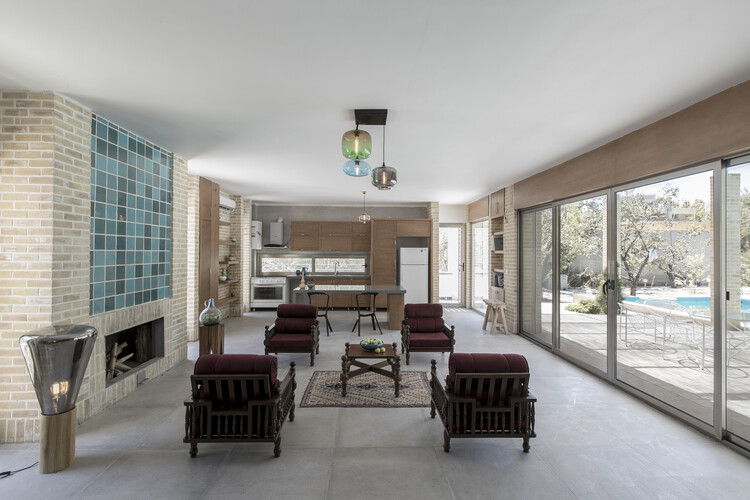
-
Architects: Hajm.e.Sabz
- Area: 143 m²
- Year: 2018
-
Photographs:Farshid Nasrabadi
-
Manufacturers: AutoDesk, Chaos Group, Lumion, Akpa Aluminium, HEIDARI BRICK, Isfahan Tile, Skycool, Trimble Navigation

Text description provided by the architects. This building located at the rural context of Isfahan margin. It has been tried to improve local construction techniques, using passive cooling ventilation system and training local contractor to build this building.



In order to protect nature and cultivated land, the building has been built on the existing platform. As client request for having a space to gather all the family, main space designed to have maximum flexibility and minimum partitions. This space designed in a way to have the capability to connect to the pergola enlarged to provide shade at the outdoor sitting and protect the main façade from severe sunshine.

Building has a typical Iranian Badger-Windcatcher that provides enough height to place the water tank. In addition, it is a traditional passive way to ventilate the building (how it works is shown in our diagram). Traditional brick used as main wall material at outer and inner façade with a layer of insulation between them.

This project has a number of specific features, which could transcend it as a new pattern of design and construction, linking the traditional and modern methods and affecting the construction processes in its area: The project has specific integrity in utilizing different structural and covering and other architectural elements.

Using simple local technics for the main structure and low-price local materials such as bricks that are properly used is the other features of the construction. The use of wind towers as a passive technic for summer ventilations and the restoration of a traditional approach for Iranian buildings is another feature of the construction. High consistency with the basis, which is one of the main features of the sustainable buildings, is among the main features, both with respect to the materials and texture and also in terms of the use of local technics.






















